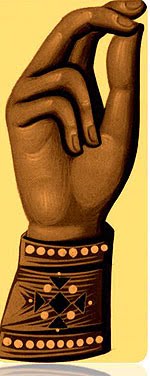The Cross
‘God forbid that I should boast except in the Cross of our Lord Jesus Christ, by whom the world has been crucified to me, and I to the world.’
– the Holy Apostle Paul (Galatians 6: 14)

Perhaps the most frequently performed sacramental action in the Christian life is the making of the sign of the Cross.
Each of us is signed with the Cross at our baptism, when we receive adoption as children of the heavenly Father, and God claims us as his own.
From that time forward the Cross of Christ, the means of our salvation, must be always kept before the eyes of our heart as our focus.
We make the Cross on ourselves at various points in prayer, in worship, and in daily life: as we rise from sleep and when we retire to bed at night, before we eat a meal, as we leave the safety of our homes to face the world each day, when we receive a blessing, when we begin the Our Father (to remind ourselves of our baptism when we become children of the Father) and at the end of the Our Father (when we pray “deliver us from evil”). We cross ourselves for fortification in the faith, to ward off evil and temptation, to call our minds from distraction and back to the life in Christ, and to give thanks for our salvation.
We make the Cross on other people and things to call down God’s blessing on them: on our loved ones, on our pets, on the food that we eat and the water that we drink.

We cross ourselves in a particular way, which reinforces our Orthodox Christian Faith. The index and middle fingers are held together with the thumb, representing the Father, and the Son, and the Holy Spirit as one God. The ring and little fingers are also held together, and pressed down against the palm. This symbolises the incarnate Christ Who came down to earth in his two natures – human and divine – to bring about our salvation.
With our fingers arranged in this way, we touch them to our forehead, our abdomen, then the right and left shoulders.
The Cross should not be formed in a hurried or slovenly manner, so that it is barely recognisable as a Cross or so that it appears that we are ashamed to confess Jesus Christ as God. Speaking of such actions, St John Chrysostom says, ‘The demons rejoice at these mad gestures’.
Rather, the Cross should be formed boldly and clearly, so that we may benefit from tracing it upon or bodies and that this may embolden us in proclaiming it to the world.
‘Let us not be ashamed to confess the Crucified; let us boldly make the sign of the Cross on the forehead, and on everything; on the bread which we eat; on the cups from which we drink; let us make it at our going out, and coming in; when we journey and when we rest: It is a great safeguard, given to the poor without price, and to the weak without labour. For this is the Grace of God; a token for the faithful, and a terror for evil spirits.’
– St Ephrem the Syrian


